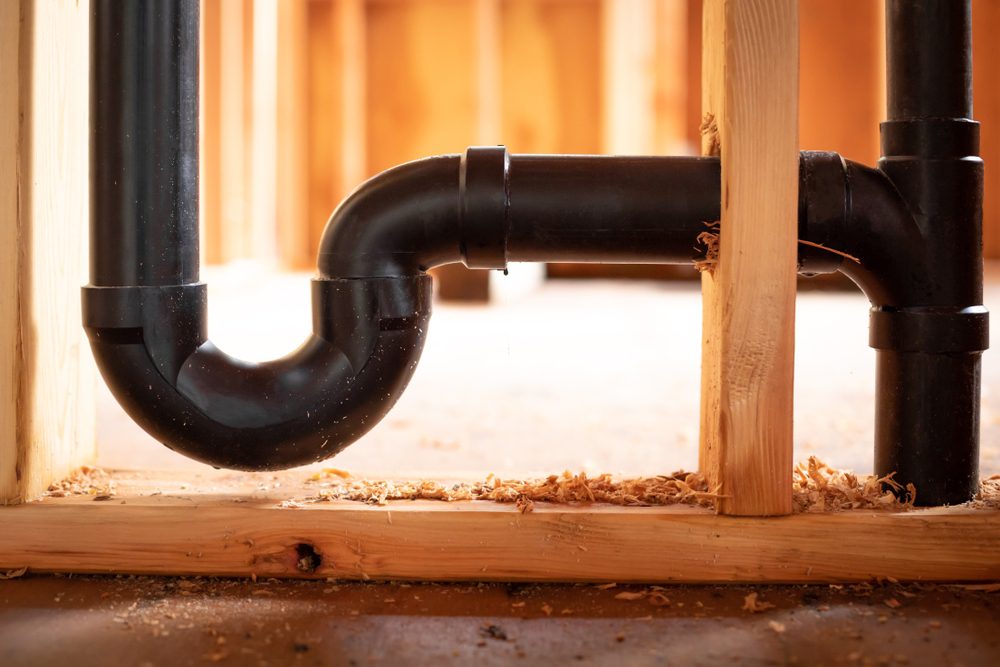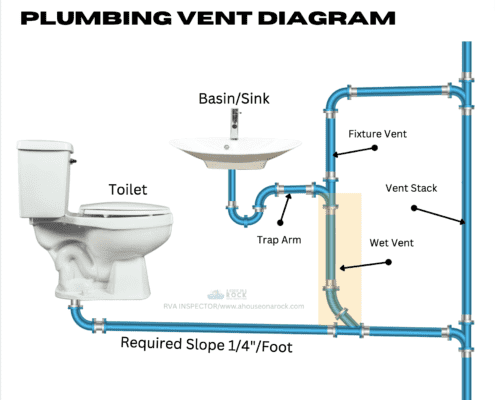Are you trying to locate additional info involving What Is a Plumbing Vent and Why Is It Important?

Correct air flow in pipes systems is frequently ignored, yet it is essential for keeping the functionality and security of your home's pipes. Ventilation helps manage atmospheric pressure, avoid the build-up of damaging gases, and make sure the effective elimination of waste. In this guide, we will certainly explore the relevance of appropriate pipes ventilation, how it functions, and the advantages it brings to your plumbing system.
How Air Flow Functions in Pipes Equipments
Air Pressure Guideline
Appropriate air flow preserves balanced atmospheric pressure within the plumbing system. When water moves with pipelines, it displaces air. Without sufficient air flow, this displacement can produce adverse pressure, bring about reduce drains pipes or siphoning of water from traps, which can trigger unpleasant smells to seep right into the home.
Preventing Sewage System Gas Buildup
One of the most critical functions of pipes vents is to prevent sewer gases, such as methane and hydrogen sulfide, from accumulating within the home. These gases can pose significant health and wellness dangers and are extremely flammable. Vent pipelines enable these gases to escape securely outside.
Assisting in Waste Removal
Ventilation helps in the effective removal of wastewater by preventing airlocks in the water drainage system. When air can flow easily via the vents, it enables water and waste to move smoothly through the pipes, reducing the danger of blockages and backups.
Benefits of Correct Air Flow
Enhanced System Effectiveness
Properly aerated pipes systems operate more successfully, with less blockages, faster draining pipes, and much less stress on the pipes. This effectiveness expands the life-span of the pipes system.
Improved Air Top Quality
By avoiding drain gases from entering your home, proper air flow adds to much better interior air high quality, making your living atmosphere healthier and a lot more comfy.
Preventing Water Damages
Sufficient ventilation aids avoid water from being siphoned out of catches, which can bring about sewage system gases getting in the home and creating water damage in time.
Steps to Make Certain Appropriate Ventilation
Consulting Pipes Codes
Constantly consult local plumbing codes when developing or customizing your plumbing system. These codes offer the required standards for proper venting and guarantee your system meets security requirements.
Routine Examination and Maintenance
Regular assessments can assist identify possible air flow problems prior to they come to be significant troubles. Upkeep tasks, such as cleaning up air vent pipelines and checking for clogs, are essential for maintaining the system in good working order.
Professional Setup
For brand-new installations or significant modifications, it's smart to hire an expert plumber. They have the proficiency to ensure the air flow system is appropriately designed and mounted according to code.
Comprehending Ventilation in Plumbing
Ventilation in plumbing refers to the network of pipelines that enable air to stream via the drain system. These vents offer numerous purposes, including regulating air pressure within the pipes, avoiding drain gases from entering the home, and helping in the smooth flow of wastewater.
Sorts Of Pipes Vents
Main Heap Vent
The main stack air vent, likewise known as the air vent pile, is the primary air vent in a plumbing system. It prolongs from the major drain line up with the roof, allowing gases to get away and fresh air to get in the system.
Branch Vent
Branch vents connect to the main pile vent and offer private components, such as sinks, bathrooms, and showers. These vents ensure that each fixture has sufficient ventilation to work appropriately.
Air Admittance Valve (AAV).
An Air Admission Shutoff (AAV) is a one-way shutoff that allows air to go into the pipes system without the requirement for a conventional vent pipeline expanding through the roof covering. AAVs are generally used in remodellings or areas where mounting a basic air vent is unwise.
Signs of Poor Ventilation in Pipes.
Slow Draining Fixtures.
If your sinks, bathtubs, or bathrooms are draining gradually, maybe a sign of inadequate air flow. Inadequate air circulation can create a vacuum effect, making it difficult for water to drain pipes correctly.
Gurgling Seems.
Gurgling noises coming from drains pipes are often a result of air being drawn through water traps due to adverse stress in the pipelines. This is a clear sign of not enough air flow.
Undesirable Smells.
Sewer odors inside your home are a warning that your pipes system is not correctly ventilated. This could suggest that sewage system gases are not being effectively aired vent outside, leading to potentially hazardous problems.
Usual Air Flow Blunders.
Insufficient Vent Sizing.
Utilizing undersized vent pipes can lead to poor air circulation and pressure imbalances in the system. It's vital to use vents that fulfill the specific requirements of your pipes system.
Improper Vent Placement.
Putting vents as well much from the components they serve can decrease their effectiveness. Appropriate positioning makes sure that air can stream freely and efficiently via the system.
Disregarding Code Requirements.
Building ordinance provide specific standards for pipes air flow. Neglecting these codes can cause a system that fails to operate appropriately and may cause pricey repair services or carcinogen.
Final thought.
Proper ventilation is an essential element of any type of plumbing system, making sure that it works successfully and safely. By understanding the value of ventilation, identifying the signs of bad ventilation, and taking actions to preserve your system, you can prevent costly concerns and shield your home's air top quality.
4 Things You Should Know About Your Plumbing Vents
What Plumbing Vents Are
Also called a vent stack, a plumbing vent is a vertical pipe attached to your drain line that runs through your roof. The plumbing vent pipe, or plumbing air vent, removes gas and odors from your plumbing system and allows fresh air to enter the pipes, helping the water to flow out of the drain pipes.
What Plumbing Vents Do
Plumbing vents have two basic functions. One of which is to allow unpleasant smelling wastewater and sewer gasses to escape your plumbing system instead of entering your home. Plumbing vent pipes are typically located on roofs, away from windows, to ensure the fumes exit the home completely.
The other function of the plumbing vent is to move fresh air into your plumbing system. This helps move water through every plumbing fixture in your house, like toilets and sink drains. Think of the way in which you need to let a little air into the bottle as you pour soda in order to make the drink flow smoothly.
Different Types of Plumbing Vents
True vent: This is the most common vent option. In simplest terms, a true vent is a vertical pipe attached to your drain line that exits through the roof. They often function as the main vent that other fixtures can connect to. Re-vent pipe or auxiliary vent: Attached to the drain line near specific plumbing fixtures, re-vent pipes run up and over to connect to the main vent. Common vent: Two plumbing fixtures installed on opposite sides of a wall are typically tied into the vent stack using something known as a sanitary cross. Wet vent: This venting option operates as a drain pipe and a vent at the same time. Wet vent drainage systems drain water from one fixture while venting the air from another. Although they’ve been used for over 100 years, wet vent systems have only recently been added to the plumbing code in many areas. If you’re planning on installing one in a bathroom remodel, make sure you check your local code prior to construction. Loop vent: For free-standing fixtures like kitchen island sinks, loop vents are ideal. These vent pipes run under the floor, rise from the P-trap, and create a loop inside the cabinet sink. Air admittance valve: An AAV is a one-way mechanical valve typically installed at the site of the plumbing fixture. AAVs allow venting to occur without having to tie into a larger venting system. They’re ideal for venting fixtures where you aren’t able to easily connect to an existing vent system. Common Plumbing Vent Issues
Although vent pipes typically don’t have water flowing through them, they’re still subject to many typical plumbing issues. For example, clogs are one of the most common problems associated with sewer vent pipes. If your vent pipe gets clogged, all of your plumbing fixtures tied into the vent stack will be affected.
A sink with a slow drain that bubbles and gurgles or a strong sewage smell around your toilet are both indicators that your toilet vent pipe is clogged. Because most vent pipes exit through the roof, old leaves, twigs or even a bird’s nest could be clogging the pipe.
Clogs in your vent pipe system cause a buildup of negative pressure, meaning that water won’t be able to flow out of your home very well. It’s similar to putting your finger over the opening of a straw to trap water inside. When you remove your finger, the water is able to flow out of the straw.
If you suspect you have any blockage in your vent, make sure you have a professional come examine the situation. Left unchecked, a blocked air vent can lead to other costly repairs, like leaks and sediment buildup.
Under Pressure
Pipe vents are essential aspects of a home’s plumbing system. Owning a home means learning about all sorts of things you never put much thought into before. But by understanding as much as you can about the important systems of your home, you can keep those budgets intact and those anxiety levels low.
https://www.homeserve.com/en-us/blog/home-improvement/plumbing-vents/

As a serious reader about What Is A Plumbing Vent & How Do They Work?, I figured sharing that editorial was smart. For those who enjoyed our post if you please be sure to pass it around. I recognize the value of reading our article about .
Schedule Now!